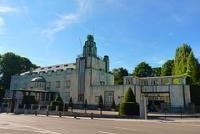
I visited this WHS this Summer 2012. It can only be viewed from the outside as it is a private residence. The main entrance is being restored but the rest of the site is in a very good shape. It looks quite strange and unpleasant to the eye at first but it was built this way on purpose to deter passers-by from the artistic treasures it houses inside. The fact that it was inscribed as a WHS prevented the owners from altering or demolishing the whole site to sell the land for some multi-storey building or yet another embassy to be built. It is truly unique and hopefully in the near future the owners will decide to open parts of this WHS to the public.
Keep reading 0 comments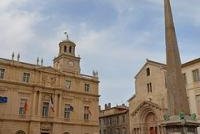
I visited this WHS in May 2012. Although the Roman arena was the highlight of my visit, still I felt Arles had seen better days and now was pretty much neglected. It was quite dirty and the whole place didn't feel very safe in general. Nearby Nimes, is not a WHS but its Roman arena and other remains are better kept and looked after and overall the city has much more to offer.
Keep reading 0 comments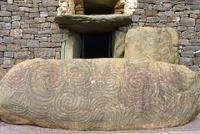
I visited this WHS in July 2012 and was expecting Newgrange to be the highlight of my trip. By all means, Newgrange is well kept and the triathlon entrance, spiral engravings and the watertight interior make it an incredible site. The young local guides are making a good job there. They also switch off the light inside to simulate the winter solstice sun rays creeping in and lighting the whole place. However, the surprise and real highlight of my visit was Knowth. Knowth comprises a series of well-restored prehistoric passage tombs which really show that this place was considered to be a very special and important place. I could notice the many similarities with the neolithic temples of Malta and indeed several studies were made and are still being made to compare these extraordinary sites. In the main passage tomb of Knowth, an ornate flint macehead or pendant was found and it can be seen in the National Museum of Archaeology in Dublin. It is almost impossible to even make a scratch on flint without machinery but incredibly enough this artefact was neatly engraved and decorated!
Keep reading 0 comments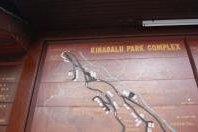
There are two vantage points where a traveler can see the inscribed area --- the National Park Headquarters, and Poring Hot Springs in Ranau(What people say about Poring Hot Spring is true - its too expensive, obviously a tourist trap. A bit elitist for budget travelers like me). I never got to climb it. But, going to those two vantage points proved to be still difficult for DIY travelers. For one, asking directions from locals was confusing. It seems that even those from the area don't know much about the ins and outs of seeing the sites. Many would suggest taking a tour, or by renting a taxi, convincing you that its the best way to go to those places. However, buses are available that would lead to the gates of Kinabalu Park HQ. Nevertheless, I felt that the place is truly gifted and is well deserved of a WHS status.
Keep reading 0 comments
Villa Adriana is advocated as the most complete and well-preserved of Roman ruins. Despite that, it is not very well known by the general public. In Tivoli it has to compete with the Renaissance Villa d’Este, which attracts most of the visitors to this town east of Rome. The Villa Adriana lies some 5km away, outside of the city center. A local bus (no. 4) will get you there, and the bus to Rome doesn’t stop far away either. The entrance costs 11 EUR.
I did not know what to expect – somehow it sounds similar to the Villa Romana del Casale in Sicily. But in reality, it is much different. The Villa Adriana covers an enormous area, 120ha. It was built as an ‘ideal city’, planned by Emperor Hadrian to entertain himself and his guests. 900 servants lived on the premises. In addition to its size, it is also remarkable how much of it still stands. Or stands again, as several buildings display clear signs of concrete or brick reconstruction.
In the middle of summer, this will be an excruciating hot site to visit – it’s all open land without shade, dusty, and the main monuments need quite a hike to get there. Signage is scarce, and there’s nowhere to buy a drink. During my visit in early September, it was cloudy but still about 25 degrees. I did my best to find all the interesting sights but must admit that it was exhausting. The problem with …
Keep reading 0 comments
The Villa d'Este lies in the center of Tivoli. Due to its proximity to Rome I guess, it attracts more than half a million visitors a year. It's a bit of an old-fashioned tourist attraction, the main point of interest is its garden with water features. I stayed in a B&B within walking distance, and so was able to get in before 9 a.m. This way I had the whole garden to myself, except for a cat that sought my companionship.
I roamed around for about 1.5 hours. The differences in height make for good exercise, and the site has enough on offer to pleasantly surprise now and then. The most impressive parts I found were the Organ Fountain and the one representing Rome. I did a quick tour through the villa as well. Every room is covered in wall paintings.
After a while, I became aware that parts of the site actually are quite run-down, or need more care than they're getting now. About a third of the fountains were not working (especially the smaller ones). I don't know if this is a case of "the tourists will come anyway, so why bother", or that a severe lack of funds is hindering the upkeep of the site. Surely there could be made more out of it than is now.
Keep reading 0 comments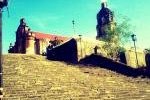
I am fortunate enough to be residing just 3 houses behind Paoay church -considered as the best example of earthquake baroque architecture. I have seen the four churches and each has its own unique characteristics. One of the better sides of visiting churches is that they have no entrance fees at all!
What makes Paoay church interesting is its rather unusual design. Prior to the Spanish era, the town of Paoay used to be called Bombay due to the presence of Indian traders near its coastal area. With the strong Hindu-Malay influences occurring within the town, oriental motifs were incorporated in the design of the church. This can be seen with the spirals on its buttresses, a highly Malay insignia. The best way to appreciate the structure is to see it from the corners of front lawn so as to see the 3D effect created by its imposing facade and wonderful rows of buttresses. Contrary to popular beliefs, Paoay church is not the oldest in the region - in fact, it is one of the youngest. It was built in 1704, while other nearby town-churches were built in the 1570s. Paoay church is made of coralstones and some bricks. The coralstones were harvested from the coastline of Pangil in the nearby town of Currimao (8Km away). Pangil boasts the longest stretch of "exposed" coral rock formations in the Philippines, ca. 2-3 km. long. Sunset photos here are superb! More photos at: https://www.facebook.com/media/set/?set=a.10150112670412613.282329.694602612&type=3
The Sta. Maria church sits on top of …
Keep reading 0 comments
As the other reviewers have pointed out, Bordeaux is a very pleasant city with many fine monuments and sights, and it is certainly a good base for exploring the many attractions in the surrounding area. There are several historic buildings, a large number of churches, and a fine riverfront to be explored. Even though there are no standout sights (except maybe the Monument aux Girondins at the Place des Quinconces), Bordeaux has a well-maintained centre stretching along a bend of the Garonne River (somewhat shaped like a crescent, hence the name "Port of the Moon"). The massive Cathedral of St. André, as well as the basilicas of St. Michel and St. Seurin, are also part of the Route of Santiago inscription.
Keep reading 0 comments
Similar to the Routes of Santiago de Compostela, this is a site that spreads across the length and breadth of France. It consists of fortifications designed by the famous military architect Vauban, who was commissioned by Louis XIV. to devise a plan to defend France's borders and coastlines. The first site I visited was St. Martin de Ré, on the pretty Isle de Ré, just off La Rochelle. This was a bit of a disappointment, since the town itself is very nice, and there are also massive fortifications everywhere, but the citadel itself is still an active prison and can't be visited. The next visit was more successful - the triple fortification at the Gironde, built on both banks and an island to defend the port of Bordeaux. Blaye, on the northern shore, features a huge, quite well-preserved citadel, and you can take a ferry to the southern shore to the much less well-preserved Fort Médoc (about a 30-minute walk from the ferry terminal). The island on which Fort Paté sits cannot be visited, but can be seen from the ferry (even though you can barely make out any fortifications).
On a separate trip to Alsace, I went to Neuf-Brisach, just a few kilometres from the pretty town of Colmar (regular bus connections available). It was constructed in the completely flat Rhine plains, so Vauban was able to build his version of an ideal military city from scratch - a heavy fortification surrounding a small town with a garrison …
Keep reading 0 comments
St. Emilion is one of France's most famous wine-growing towns, and the centre of the Bordeaux appellation. Coming by train from Bordeaux, you can see the vineyards stretching as far as the eye can see. The station is about a 20-minute walk from the village. Apart from countless wineries and wine shops, St. Emilion has many interesting historic features, including the unique Monolithic Church, which is almost totally underground. It can only be visited on a guided tour, though (the guide said that only 20% of visitors to the village take a tour of its most famous sight; the other 80% just come for the wine). A good way to explore the surrounding vineyards and chateaux is the small tourist train, whch also gives some useful historic infos. St. Emilion is also located along the Way of St. James, but doesn't seem to be included in the WH site (even though many other French WH sites are).
Keep reading 0 comments
A few years ago (2009) I have traveled to Bucovina with my family and we wanted to see all the churches included in UNESCO World Heritage List. My mother insisted that not all worth a visit just because she saw them and was disappointed because the poor care and destructions. I decided I have to see all them so we did it and the visit was amazing. One of the oldest ones is Arbore, a very small church from Suceava country. It is dedicated to Saint John the Baptist. The name in the UNESCO list is Painted Churches of Northern Moldavia (there are 8 such places and I will describe all of them in time). The church from Arbore was built in 1503 by boyar Luca Arbore, one of the right hands of Ștefan cel Mare (Stephan the Great), the Prince of Moldavia between 1457 and 1504. The construction of the church was completed in about 5 months. Its exterior paintings date from 1541 and were made by Dragoº Coman and took about 4 decades. The outside paintings on the western wall are the best preserved, as opposed to those on the northern facade, which suffered extensive weather-related damage. This damage arose mostly because the church roof was plundered by marauding Cossack troops and melted in order to make bullets (the original roof was made of lead). Inside painting depicts Luca Arbore and his family offering the church to God through the intercession of Saint John the Baptist. Also inside …
Keep reading 0 comments
My hgusband and I were at this site just as the village was being inundated with the rising water of the Ataturk Damn The archaeologists were desperate to remove as much as possible to the local museum befor the water overcame the latest portion of the dig.
We were able to see beautiful mosaics and frescos in place , not in a museum.
So much was lost but people do need water. Was the damn a political act or a humanitarian act?
It was a very emotional exerience
Keep reading 0 comments
Located in a small town in the Poitou region, the magnificent abbey of St-Savin is nicknamed the "Romanesque Sistine Chapel" for its murals showing biblical scenes dating from the 11th and 12th centuries. They are almost perfectly preserved and well worth a closer look, even though you have to crane your neck, since most of them are on the abbey's ceiling. There is also a quite interesting exhibit on the history and preservation of the murals on the upper floor (in French only, of course), as well as a small garden. The best views of this quite large building can be enjoyed from the opposite bank of the Gartempe River. St-Savin can be reached by bus from Poitiers (about a 50-minute ride), but this has to be planned carefully, since there are only a handful of buses every day (no more than 4). Still, a very worthwhile excursion.
Keep reading 0 comments
Mont St.Michel is one of the most famous and recognizable sights in the world, and one of the best-known symbols of France. Known as the Wonder of the West, or Merveille de l'Occident, it is famous as much for its artistic, cultural and religious significance as for its unique location on a small island off the Norman coast. Though it is visited daily by countless tourists and pilgrims, it is quite well managed, as many people stay in the restaurants and tourist shops of the village at the foot of the mount. It takes a bit of effort to reach the abbey at the top (which charges a fee), but this is certainly worth it, as the abbey is really a great and very interesting building. There are also several museums, but those are overpriced and only mildly interesting, and only recommendable if you have some time on your hands. To reach the mount, I stayed in Rennes and took a bus, which was quite convenient and trouble-free. There are also bus connections to the villages of Pontorson and Dol-de-Bretagne, but of course Rennes is a large city with several sights of its own. It should be noted that, similar to the cathedrals of Amiens and Bourges, Mont St. Michel is a double inscription as part of the Routes of Santiago de Compostela.
Keep reading 0 comments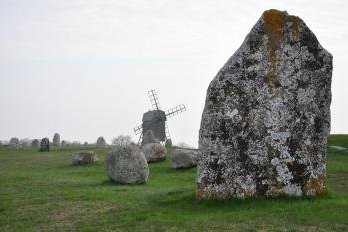
When I read guidebook's review on Oland, I was curious with their wordings "haunted beautiful", the words that in my opinion a very strange way to summarize certain place; however, I could not agree more with the wordings they chose after I saw this place. From the historic city of Kalmar, I rented a car and drove to Oland, while most of tourists turned left to the north part of the island for beach and cultural villages; I easily decided to turn right to the opposite direction where the World Heritage Sites located, the agricultural landscape of Southern Oland.
At first the flat landscape of farmland was quite Dutch nostalgic with many windmills, large red farmhouses and light forests, then the landscape changed to green hill with stonewall and many impressive standing stone of Viking tombs against the misty sky that made mystery or maybe spooky aura, a landscape that not so Swedish at all! After the strange farmland area, I was at the Stora Alvaret, a large limestone plain; the area looked very dry compared to other area on the island. The stone plain was full of dry savannah-liked grass with some bush and wildflowers, another odd landscape of this island. I continued to finish my trip at Ottenby which was the most southern spot of this island. The area was the desert landscape of peat, hundreds of mosses covered rock and Baltic Sea that were merged together into some kind of a weirdly bog wetland that …
Keep reading 0 comments
Malbork is a wonderful piece of history..and has been wonderfully restored after the terrible distruction during WWll.. How sad to try to wipe out the pride of the Polish people. Our tour was very well done and we could have stayed hours more. So beautiful.
Keep reading 0 comments
Unknown to me, John S. below has written almost word for word my summary of this town. Though I probably wouldn’t use the word ‘boring’, more just ‘laid back’, though I was blessed with magnificent weather on my 30 minute stop en route to Aquileia.
The best way to view this town is if you are heading over on a plane (I landed at nearby Friuli Venezia Giulia Airport) which allows you to see the star shaped lay out, or you could just have a look on a satellite map.
The unique lay out means that it can be a touch disorientating as all the roads look the same as they radiate from the central square to the bulky town walls. I really enjoyed my espresso in the great café next to the Duomo whilst watching the fleet of vintage Vespa’s parading around the square, and after a quick climb of the fortifications I was off on my merry way.
It is a charming little place, that I can’t imagine getting inscribed on the World Heritage List on its own, but is certainly worth a brief stop for a coffee and a wander.
[Site 2: Experience 5]
Keep reading 0 comments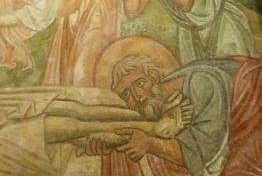
I wasn't expecting it, but the Basilica of Aquileia was astounding, one of the finest churches I have been in during all my World Heritage Site hunting.
As the other reviewers have noted the highlights are the mosaics on the floor which cover the entire surface of the Basilica. However I think I had an even stronger fondness for the incredible 12th century frescos in the crypt below the apse. The wonderful pastel colours and expressive paintings really left a mark on me, not too dissimilar to the feeling I had when leaving the Scorvegni Chapel. All in all a truly magnificent site. The fact that there are the scattered remains of a prominent Roman town strewn around this magnificent building only serves to amplify its impressiveness. I rather enjoyed walking amongst the ruins and partially restored columns whilst eating an ice cream, in fact there are very few things I could imagine that are as pleasing as this.
Even in a region which is almost drowning in cultural treasures, the Basilica at Aquileia stands out as a highlight, and it is hard to think of a bigger compliment than that.
[Site 8: Experience 6]
Keep reading 0 comments
I'm from Malta and am 51 years old now.
I mention this because in my childhood, my family visited many historical places which were not yet "institutionaliased". We frequently had picnics at some of these sites. We explored these places and knew every nook and cranny of these temples. I've played hide and seek in these temples. Great fun! At that time they were simply open to the public.
While I think it is laudable for many of these historical sites to now be recognized as part of our heritage, and to be preserved, and while I am glad there are funds allotted to conservation, I think there has been a lot lost along the way.
Nowadays when I take visitors to see these sites, I have to explain that "round that corner they can't see", unless they are giraffes with EXTREMELY long necks, there's a really interesting feature, etc etc.
Many museums are making features more accessible to visitors. Unfortunately, I can now only walk a very limited walkway in the centre of the temple structures. Why can't I come up closer? Move around the structures more freely? Would I be vandalizing them by doing so?
Such a pity that in the interests of preservation, visitors can't explore more. Can't come up close. Can't feel the excitement of walking through the temples from room to room.
It 's a see but don't touch feeling. What a shame! There's no engagement.
Keep reading 0 comments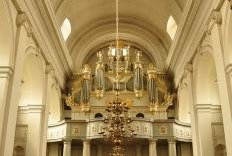
When I first saw Karlskrona, a prosperous looking town on Southern Swedish coast, I was quite impressed with its beautiful location with beautiful Baltic Sea, many fortified islets and countless yachts and boat mooring in the marinas and bay. The market square was the first place I saw, reputedly to be the second biggest square in Europe; however I was not sure for this superlative claim since I could not feel any grandness from this square. The Frederick Church in the square was quite pretty, when I entered the church I was surprised with its white marble interior that make the church looked pretty lavish, until I discovered that the marble was actually a wood painted! Since I visit on the weekend, the square was full with market stalls and many part of the square had turned to be a big car park. The market was lively but the car park really ruined the view.
My next destination was the Church of Holy Trinity, it was closed during my visit, but the exterior was quite interesting with very Classic Italian touch. Then I leisurely walked to see the red Admiralty Church, a biggest wooden church of Sweden. This church had strong link with navy so many decorations were related to war history, but in general the church was quite lovely and the story of Rosenbom in front of the church was quite unique. After nice walk along the coast passing many nice fortress wall and grand manors, I was at …
Keep reading 0 comments